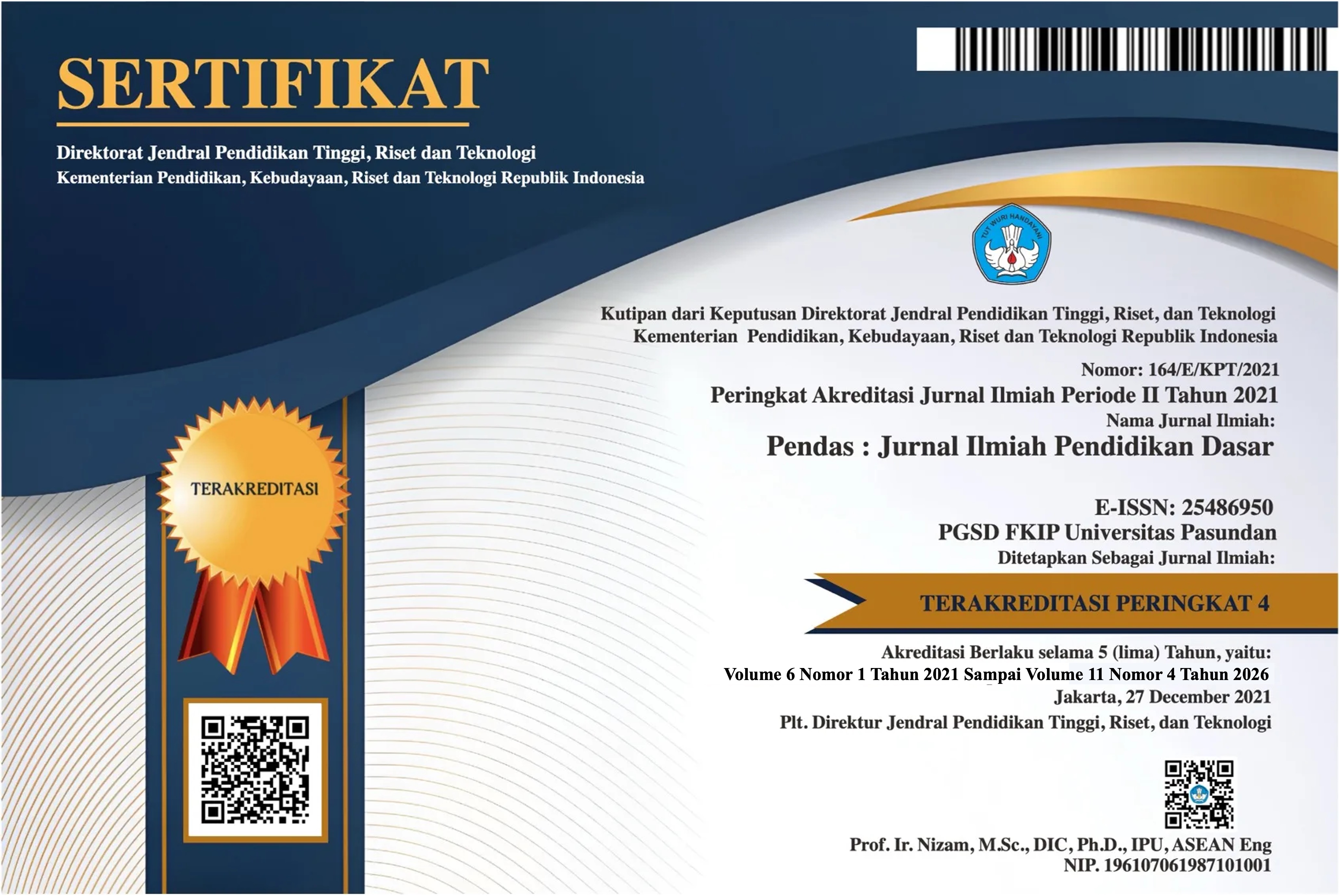ANALISIS PENGGUNAAN MEDIA PEMBELAJARAN BERBASIS TEKNOLOGI DITINJAU DARI USES AND GRATIFICATION THEORY
DOI:
https://doi.org/10.23969/jp.v9i2.16575Keywords:
Learning Media, Technology, Uses and Gratification TheoryAbstract
This research aims to determine the influence of Uses and Gratification Theory on the use of technology-based learning media. This research uses a quantitative approach and survey research type. The respondents in this research were teachers who taught at elementary schools in East Jambi District, Jambi City. This research began by filling out a pilot study questionnaire with 35 respondents, then continued with main data collection. The main data collection technique was distributing questionnaires online using Google Form via WhatsApp, with 321 respondents. After the data is obtained it will be analyzed quantitatively using PLS-SEM. The results of this research indicate that the Uses and Gratification Theory which consists of cognitive needs, affective needs and social needs is valid for explaining the use of technology-based learning media. The Uses and Gratification Theory component consisting of cognitive needs, affective needs and social needs influences the use of technology-based learning media among elementary school teachers in East Jambi District, Jambi City. Teachers use media according to their needs, from the measurement model and the resulting output shows that the Uses and Gratification Theory is valid to explain the effect of using technology-based learning media with Cronbach's alpha and composite reliability values above 0.5. The three hypotheses proposed by the researcher produced a significant effect with a t-value greater than 1.96. The first hypothesis is that cognitive needs influence the use of technology-based learning media with a t-statistic value of 4.203 ≥ 1.96. The second hypothesis is that affective needs influence the use of technology-based learning media with a t-statistic value of 2.433 ≥ 1.96. The third hypothesis is that social needs influence the use of technology-based learning media with a t-statistic value of 4.486 ≥ 1.96.Downloads
References
Arsyad, Azhar. (2011). Media Pembelajaran. Jakarta: PT. Raja Grafindo Persada.
Asrial, A., Syahrial, S. Kurniawan, A. D., Rahmat, P., & Putut, N. (2019). Supporting Technology 4.0: Ethoconstructivist Multimedia for Elementary Schools. International jurnal of: online and biomedical engineering, 15(14), 54-66.
Camilleri, M.A, & Falzon, L. (2020). Understanding Motivations to Use Online Steaming Services: Integrating the Technology Acceptance Model (TAM) and the Uses and Gratification Theory (UGT). Spanish Journal of Marketing-ESIC.
Pakpahan, A.F. (2020). Pengembangan Media Pembelajaran. Jakarta: Yayasan Kita Menulis.
Pane A, Dasapong M.D. (2017). Belajar dan Pembelajaran. Fitrah: Jurnal Kajian Ilmu-ilmu Keislaman, 3(2), 333-352.
Kriyantono, Rachmat. (2006). Teknik Praktis Riset Komunikasi. Jakarta: Kencana Prenada Media Group.
Sarwono, Sarlito W. (2009). Pengantar Psikologi Umum. Jakarta: PT. Raja Grafindo Persada.
Sofwan, M. (2021). Model Pemetaan Determinan Penggunaan TIK pada Proses Pembelajaran di Sekolah Dasar di Kota Jambi.
Thongsri, N., Shen, L., Bao, Y., & Alharbi, I. M. (2018). Integrating UTAUT and UGT to Explain Behavioural Intention to Use M-learning. Journal of System and Information Technology.
Kim, J., & Lee, K. S. S. (2020). Conceptual Model to Predict Filipino Teachers Adoption of ICT-based Instruction in Class: Using the UTAUT Model. Asia Pacific Journal of Education, 1-15.
Downloads
Published
Issue
Section
License
Copyright (c) 2024 Pendas : Jurnal Ilmiah Pendidikan Dasar

This work is licensed under a Creative Commons Attribution 4.0 International License.



















